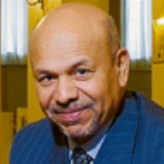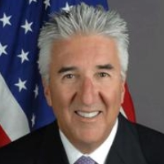Libya
Archeological evidence indicates that as early as 8,000 BC, the coastal plain of Ancient Libya was populated by people called the Berbers, who were proficient at the domestication of cattle and cultivation of crops. Since then, other people including the Phoenicians, Carthaginians, Greeks, Persian Empire, Romans, Vandals, Arabs, Turks, and Byzantines have also inhabited all or part of modern-day Libya. The modern borders of Libya were drawn by Italy, which superseded the Ottoman Turks in the area around Tripoli in 1911. Italy did not renounce their control until 1943 after their defeat in World War II. Libya was passed to UN administration and gained independence in 1951. Since a military coup in 1969, Colonel Mummar al-Gadaffi has ruled the country.
Lay of the Land: The People’s Great Socialist Libyan Arab Jamahiriya (mass of people) is located on the north central coast of Africa. About 95% of Libya’s terrain consists of barren, rock-strewn plains and sandy deserts. A feature of the Libyan climate is the ghibli, a hot, dry, dust-laden southern wind which usually comes in the spring and fall and lasts for one to four days.
The term “Libya” was first used by the ancient Egyptians to refer to a single Berber tribe. The Greeks used the name for most of North Africa. However, the term was not used for an actual political entity until well into the 20th century. For most of its history, the story of Libya was really the history of three separate regions: Cyrenaica, nearest to Egypt; Tripolitania, where most of the population lives; and the Fezzan, a desert area dotted with oases.
Al-Fajral Al-Jadeed [In English]
The United States’ stormy history with Libya got off to a violent beginning during the Barbary Wars. While America was a British colony, American ships were protected by the British navy, but when the United States won its independence, it lost British protection, and American merchant ships fell prey to the Barbary pirates along the coast of North Africa under the control of Yusuf ibn Ali Karamanli. The pirates captured the ships and enslaved their American sailors. In 1803, US President Thomas Jefferson sent the Sixth Fleet to blockade the harbor of Tripoli. Unfortunately, the USS Philadelphia ran aground. Its 308 sailors were forced to surrender and they were held hostage for 19 months until the US finally agreed to pay off Yusuf. These engagements eventually were immortalized in the Marine Corps hymn: “From the halls of Montezuma to the shores of Tripoli.”
Noted Libyan-Americans
Dr. Saddeka Mohammed Arabi is a social anthropologist and author who was born in Tripoli, Libya. Among her works, she examined the works of nine contemporary Saudi women writers and their influence on Arabic cultural discourse.
US-Libyan trade has soared since Libya came off the US terrorism list and the last economic sanctions were lifted in 2006. Only three years earlier, the US imported absolutely nothing from Libya. By 2006, trade imports from Libya totaled about $2.5 billion; in 2007 they rose to $3.4 billion, in 2008 total imports jumped to $4.1 billion, before falling in 2009 to $1.9 billion.
Gaddafi Insists on Tent on New Jersey Real Estate
As much as the Bush administration tried to portray a new Libya to justify closer relations, the State Department continues to report that Gaddafi’s government has a poor human rights record. Citizens do not have the right to change their government. Reported torture and arbitrary arrest remained problems. The government restricted civil liberties and freedoms of speech, press, assembly, and association. The government did not fully protect the rights of migrants, asylum seekers, and refugees. Other problems included poor prison conditions; impunity for government officials; lengthy political detention; denial of fair public trial; infringement of privacy rights; restrictions of freedom of religion; corruption and lack of transparency; societal discrimination against women, ethnic minorities, and foreign workers; trafficking in persons; and restriction of labor rights.
A native of California, Chris Stevens arrived in Tripoli in June 2007 as Deputy Chief of Mission and became Chargé d’Affaires, a.i., in January 2008.
Appointment: Feb 7, 1952
Presentation of Credentials: Mar 6, 1952
Termination of Mission: Left post, Jun 24, 1954
Note: John N. Gatch, Jr., was serving as Chargé d'Affaires ad interim when the Legation in Libya was raised to Embassy status, Sep 25, 1954.
Appointment: Sep 25, 1954
Presentation of Credentials: Nov 16, 1954
Termination of Mission: Superseded, Mar 17, 1958
Note: Commissioned during a recess of the Senate; recommissioned after confirmation on Jan 24, 1955.
Appointment: Feb 5, 1958
Presentation of Credentials: Mar 17, 1958
Termination of Mission: Left Libya, Dec 20, 1962
Appointment: May 3, 1963
Presentation of Credentials: May 27, 1963
Termination of Mission: Left post, Jun 30, 1965
Appointment: Jul 22, 1965
Presentation of Credentials: Oct 16, 1965
Termination of Mission: Left post, Jun 21, 1969
Appointment: Jul 8, 1969
Presentation of Credentials: Oct 9, 1969
Termination of Mission: Left post, Nov 7, 1972
 Aujali, Ali
Aujali, Ali
Ali Aujali was named chief of the Libyan Interests Section in Washington, DC, in the spring of 2004 after serving as the chargé d’affaires to Canada from 2001 until 2004. He was then appointed as Libya’s Ambassador to the US on January 6, 2009.
Libya’s Representative Office in the U.S.
- Table of Contents
- News
- Overview
- Basic Information
- History
- Newspapers
- History of U.S. Relations with Libya
- Current U.S. Relations with Libya
- Where Does the Money Flow
- Controversies
- Human Rights
- Debate
- Past Ambassadors
- Ambassador to the U.S.
- Embassy Web Site in the U.S.
- Comments
- Leave a comment
U.S. Ambassador to Libya

Six months after the murder of U.S. Ambassador to Libya Christopher Stevens in Benghazi, Libya, President Barack Obama has nominated career diplomat and Middle East expert Deborah K. Jones to succeed Stevens in Tripoli.
Born circa 1956, Jones grew up in New Mexico, earned a B.A. in History at Brigham Young University in 1978, and an M.S. in National Security Strategy from the National War College of the National Defense University in 1998, where she wrote a paper entitled, “A National Security Strategy in Plaid: The NSS as a Political Document,” assessing the Clinton Administration’s “National Security Strategy for a New Century,” which was released in May 1997. She has also studied Arabic at the Foreign Service Institute in Roslyn, Virginia, and at the State Department’s Field School in Tunis, Tunisia.
A career member of the Senior Foreign Service, Class of Minister-Counselor, Jones joined the U.S. Department of State in 1982. Early career assignments included two years as country director in the Office of Arabian Peninsula and Iran Affairs, service as staff assistant to Assistant Secretary Richard Murphy of the same office, a stint as desk officer for Jordan, and service in the State Department’s Operations Center and on its Board of Examiners. Early overseas postings included assignments in Baghdad, Iraq and Buenos Aires, Argentina.
During the 1990s, Jones bounced between the Middle East and Washington, D.C., serving as consular section chief at the U.S. Embassy in Damascus, Syria, from 1990 to 1991, and as consular section chief/regional consular officer at the embassy in Addis Ababa, Ethiopia, from 1992 to 1994. Back in Washington, she served as acting public affairs advisor to the Assistant Secretary of State for Near East Affairs from 1994 to 1995.
After earning her M.S. in 1998, Jones was named deputy chief of mission at the embassy in Abu Dhabi, United Arab Emirates, where she served from 1998 to 2001, returning to Washington to serve as the director of the Office of Arabian Peninsula Affairs and Iran from 2002 to 2004, and then as principal officer at the Consulate General in Istanbul, Turkey from 2005 to 2007.
Jones served her first ambassadorship from April 2008 to June 2011, as ambassador to Kuwait. She has been a scholar-in-residence at the Middle East Institute in Washington, DC, since July 2011.
Jones is married to fellow Foreign Service officer Richard G. Olson, who has been ambassador to Pakistan since September 2012, and with whom she has two daughters. Jones speaks Arabic, Spanish and French.
To Learn More:
Six Months after Benghazi, Obama Names Libya Envoy (by Howard LaFranchi, Christian Science Monitor)
Obama Meets Libyan Premier and Names Envoy (by Michael R. Gordon, New York Times)
morePrevious U.S. Ambassador to Libya

Gene A. Cretz is a career diplomat who was nominated in July of 2007 by President W. Bush as the first US Ambassador to Libya since 1972. He is from Albany, New York, and he attended the University of Rochester, graduating in 1972 with a degree in English Literature. He then received a Masters of Science Degree in Linguistics from the State University College at Buffalo in 1975.
Archeological evidence indicates that as early as 8,000 BC, the coastal plain of Ancient Libya was populated by people called the Berbers, who were proficient at the domestication of cattle and cultivation of crops. Since then, other people including the Phoenicians, Carthaginians, Greeks, Persian Empire, Romans, Vandals, Arabs, Turks, and Byzantines have also inhabited all or part of modern-day Libya. The modern borders of Libya were drawn by Italy, which superseded the Ottoman Turks in the area around Tripoli in 1911. Italy did not renounce their control until 1943 after their defeat in World War II. Libya was passed to UN administration and gained independence in 1951. Since a military coup in 1969, Colonel Mummar al-Gadaffi has ruled the country.
Lay of the Land: The People’s Great Socialist Libyan Arab Jamahiriya (mass of people) is located on the north central coast of Africa. About 95% of Libya’s terrain consists of barren, rock-strewn plains and sandy deserts. A feature of the Libyan climate is the ghibli, a hot, dry, dust-laden southern wind which usually comes in the spring and fall and lasts for one to four days.
The term “Libya” was first used by the ancient Egyptians to refer to a single Berber tribe. The Greeks used the name for most of North Africa. However, the term was not used for an actual political entity until well into the 20th century. For most of its history, the story of Libya was really the history of three separate regions: Cyrenaica, nearest to Egypt; Tripolitania, where most of the population lives; and the Fezzan, a desert area dotted with oases.
Al-Fajral Al-Jadeed [In English]
The United States’ stormy history with Libya got off to a violent beginning during the Barbary Wars. While America was a British colony, American ships were protected by the British navy, but when the United States won its independence, it lost British protection, and American merchant ships fell prey to the Barbary pirates along the coast of North Africa under the control of Yusuf ibn Ali Karamanli. The pirates captured the ships and enslaved their American sailors. In 1803, US President Thomas Jefferson sent the Sixth Fleet to blockade the harbor of Tripoli. Unfortunately, the USS Philadelphia ran aground. Its 308 sailors were forced to surrender and they were held hostage for 19 months until the US finally agreed to pay off Yusuf. These engagements eventually were immortalized in the Marine Corps hymn: “From the halls of Montezuma to the shores of Tripoli.”
Noted Libyan-Americans
Dr. Saddeka Mohammed Arabi is a social anthropologist and author who was born in Tripoli, Libya. Among her works, she examined the works of nine contemporary Saudi women writers and their influence on Arabic cultural discourse.
US-Libyan trade has soared since Libya came off the US terrorism list and the last economic sanctions were lifted in 2006. Only three years earlier, the US imported absolutely nothing from Libya. By 2006, trade imports from Libya totaled about $2.5 billion; in 2007 they rose to $3.4 billion, in 2008 total imports jumped to $4.1 billion, before falling in 2009 to $1.9 billion.
Gaddafi Insists on Tent on New Jersey Real Estate
As much as the Bush administration tried to portray a new Libya to justify closer relations, the State Department continues to report that Gaddafi’s government has a poor human rights record. Citizens do not have the right to change their government. Reported torture and arbitrary arrest remained problems. The government restricted civil liberties and freedoms of speech, press, assembly, and association. The government did not fully protect the rights of migrants, asylum seekers, and refugees. Other problems included poor prison conditions; impunity for government officials; lengthy political detention; denial of fair public trial; infringement of privacy rights; restrictions of freedom of religion; corruption and lack of transparency; societal discrimination against women, ethnic minorities, and foreign workers; trafficking in persons; and restriction of labor rights.
A native of California, Chris Stevens arrived in Tripoli in June 2007 as Deputy Chief of Mission and became Chargé d’Affaires, a.i., in January 2008.
Appointment: Feb 7, 1952
Presentation of Credentials: Mar 6, 1952
Termination of Mission: Left post, Jun 24, 1954
Note: John N. Gatch, Jr., was serving as Chargé d'Affaires ad interim when the Legation in Libya was raised to Embassy status, Sep 25, 1954.
Appointment: Sep 25, 1954
Presentation of Credentials: Nov 16, 1954
Termination of Mission: Superseded, Mar 17, 1958
Note: Commissioned during a recess of the Senate; recommissioned after confirmation on Jan 24, 1955.
Appointment: Feb 5, 1958
Presentation of Credentials: Mar 17, 1958
Termination of Mission: Left Libya, Dec 20, 1962
Appointment: May 3, 1963
Presentation of Credentials: May 27, 1963
Termination of Mission: Left post, Jun 30, 1965
Appointment: Jul 22, 1965
Presentation of Credentials: Oct 16, 1965
Termination of Mission: Left post, Jun 21, 1969
Appointment: Jul 8, 1969
Presentation of Credentials: Oct 9, 1969
Termination of Mission: Left post, Nov 7, 1972
 Aujali, Ali
Aujali, Ali
Ali Aujali was named chief of the Libyan Interests Section in Washington, DC, in the spring of 2004 after serving as the chargé d’affaires to Canada from 2001 until 2004. He was then appointed as Libya’s Ambassador to the US on January 6, 2009.
Libya’s Representative Office in the U.S.
Comments
U.S. Ambassador to Libya

Six months after the murder of U.S. Ambassador to Libya Christopher Stevens in Benghazi, Libya, President Barack Obama has nominated career diplomat and Middle East expert Deborah K. Jones to succeed Stevens in Tripoli.
Born circa 1956, Jones grew up in New Mexico, earned a B.A. in History at Brigham Young University in 1978, and an M.S. in National Security Strategy from the National War College of the National Defense University in 1998, where she wrote a paper entitled, “A National Security Strategy in Plaid: The NSS as a Political Document,” assessing the Clinton Administration’s “National Security Strategy for a New Century,” which was released in May 1997. She has also studied Arabic at the Foreign Service Institute in Roslyn, Virginia, and at the State Department’s Field School in Tunis, Tunisia.
A career member of the Senior Foreign Service, Class of Minister-Counselor, Jones joined the U.S. Department of State in 1982. Early career assignments included two years as country director in the Office of Arabian Peninsula and Iran Affairs, service as staff assistant to Assistant Secretary Richard Murphy of the same office, a stint as desk officer for Jordan, and service in the State Department’s Operations Center and on its Board of Examiners. Early overseas postings included assignments in Baghdad, Iraq and Buenos Aires, Argentina.
During the 1990s, Jones bounced between the Middle East and Washington, D.C., serving as consular section chief at the U.S. Embassy in Damascus, Syria, from 1990 to 1991, and as consular section chief/regional consular officer at the embassy in Addis Ababa, Ethiopia, from 1992 to 1994. Back in Washington, she served as acting public affairs advisor to the Assistant Secretary of State for Near East Affairs from 1994 to 1995.
After earning her M.S. in 1998, Jones was named deputy chief of mission at the embassy in Abu Dhabi, United Arab Emirates, where she served from 1998 to 2001, returning to Washington to serve as the director of the Office of Arabian Peninsula Affairs and Iran from 2002 to 2004, and then as principal officer at the Consulate General in Istanbul, Turkey from 2005 to 2007.
Jones served her first ambassadorship from April 2008 to June 2011, as ambassador to Kuwait. She has been a scholar-in-residence at the Middle East Institute in Washington, DC, since July 2011.
Jones is married to fellow Foreign Service officer Richard G. Olson, who has been ambassador to Pakistan since September 2012, and with whom she has two daughters. Jones speaks Arabic, Spanish and French.
To Learn More:
Six Months after Benghazi, Obama Names Libya Envoy (by Howard LaFranchi, Christian Science Monitor)
Obama Meets Libyan Premier and Names Envoy (by Michael R. Gordon, New York Times)
morePrevious U.S. Ambassador to Libya

Gene A. Cretz is a career diplomat who was nominated in July of 2007 by President W. Bush as the first US Ambassador to Libya since 1972. He is from Albany, New York, and he attended the University of Rochester, graduating in 1972 with a degree in English Literature. He then received a Masters of Science Degree in Linguistics from the State University College at Buffalo in 1975.







Comments